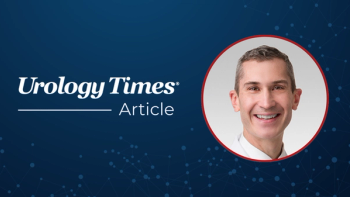
Dr. Krupski discusses challenges with tele-cystoscopy
“I think in actuality it's going to have to be one of our trained APPs going to these sites on a scheduled day, like the third Wednesday of every month,” says Tracey L. Krupski, MD.
In this interview, Tracey L. Krupski, MD, discusses challenges with the implementation of a model for tele-cystoscopy. Krupski is a professor of urology and the division chief at the University of Virginia (UVA) in Charlottesville.
Video Transcript:
The problem with the work going forward is that when we went to our sustainability portion of it, which was training a nurse practitioner–who's a family practice, family med type nurse practitioner–to do this cystoscopy, yes, they could be taught. We brought them to Charlottesville, we did an interesting living cadaver lab where they could practice over and over with the cystos and look in the bladder, and then they could do it in the real patients. We did patient satisfaction questionnaires where the patients were satisfied with it. The problem was maintaining that skill. Something that's not in your wheelhouse that you do once every month or once every 2 months, that was the part where it wasn't sustainable. They just couldn't keep the skills up. It was hard for our team members to get down there repeatedly to drive the 6 hours every couple of weeks to have them do cystos. That started to make it a less attractive option. And then COVID hit. So, COVID happened in the middle of this study, which was timely in the sense that of course doing telemedicine work was very apropos during COVID. However, it limited our ability to go visit or give them touch ups or retraining sessions. It is not a standard part of our telemedicine platform here at UVA. We are trying to reinvigorate it at this point. But I think in actuality it's going to have to be one of our trained APPs going to these sites on a scheduled day, like the third Wednesday of every month. It's just set that that's where you would do cystoscopy.
I think we can actually change to the disposable scopes, which is a little bit of a different story. But we should be able to then not have to have those sites maintain the equipment. Because of the second hurdle that we faced other than the loss of skills by the nurse practitioners–it could be any APP, but these happened to be nurse practitioners–was that it's very expensive fancy equipment to take care of. So, the first scope that we had paid for by the pilot grant got broken. It's $8,000 to repair that scope. And of course, the grant didn't have the money. So ultimately, with the second grant funding that we got, we were able to procure an additional scope. But that's a lot for these clinics in places that are very underrepresented, underserved by both general practitioners as well as specialists like urologists or any surgical subspecialty. They're trying to stay afloat. They're worried about coronary disease, opioid epidemic, diabetes, smoking. Cystoscopy and bladder cancer and taking care of a $17,000 scope is much lower on their list of priorities when you actually go and live and walk in their shoes. So, morphing into these disposable scopes, as long as the clarity and the pixelation is going to be comparable or adequate, will be removing another hurdle now that those type of scopes exist.
This transcription has been edited for clarity.
Newsletter
Stay current with the latest urology news and practice-changing insights — sign up now for the essential updates every urologist needs.


















